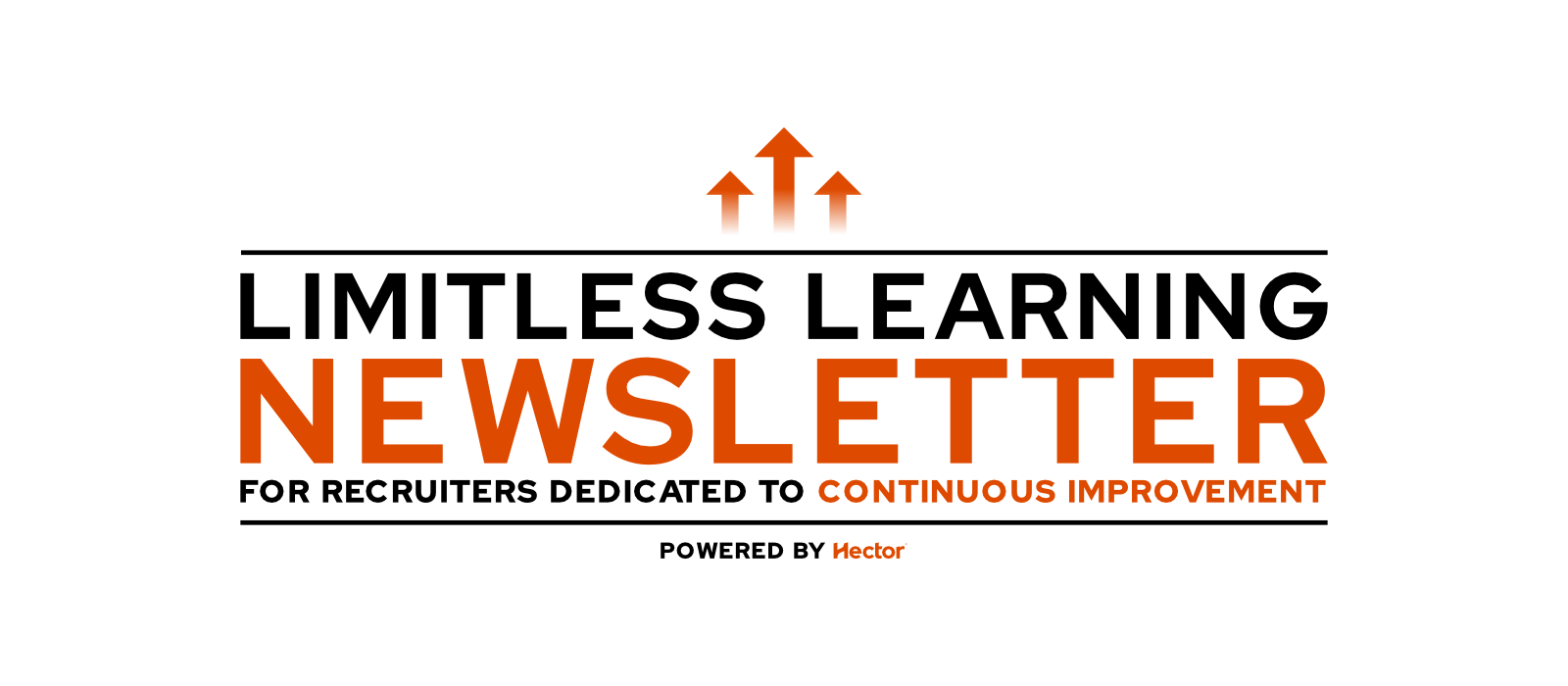The three most important KPIs for success
KPIs are something that we’ve widely spoken about here at Limitless Learning.
Some of you reading this will love KPIs (sometimes) whereas others may see KPIs as somewhat negative.
Whatever your view is, there’s no getting away from the fact that KPIs are crucial to your success as a recruiter.
We’re going to break down what we believe to be the top three most important KPIs for success.
Let’s dive in!
#1 CV to Interview ratio
Your CV to Interview ratio looks at the ratio of candidates you’ve submitted to hiring managers vs the number of given interviews.
This is a crucial metric because it directly looks at the quality of CVs you are presenting, thus you have the ability to impact this and measure your own performance.
In an ideal world, you’d want to have a 3:1 or 4:1 interview ratio, which would mean that for every three or four CVs submitted, one of these would go to interview.
Particularly with long-term clients, you would hope to achieve 3:1 or maybe even 2:1.
However, with newer clients that you haven’t got an existing relationship with or depth of understanding of their needs, a slightly higher CV to interview ratio is OK to begin with.
You should be looking to measure your CV to interview ratio for every role that you’re working on.
From there, you can look at the roles that you exceed best in and understand where your strengths are. You can also ask clients for key feedback so you can improve your CV to interview ratio.
Not only will this save you time and build a stronger reputation with your clients, but it will enable you to run a much smoother recruitment process and make placements faster.
How can you measure this?
If your CRM hasn’t got a capability for you to log your CV to Interview ratio, keep track of it on a spreadsheet/Google sheets and review your performance each quarter (or each month if you’re a contract recruiter).
#2 Net Promoter Score
Your Net Promoter Score is all about the candidate experience.
It’s an incredible market research tool that enables you to get under the hood of your candidate experience and understand where you’re going right (or wrong).
It can also be used for your clients to rate their experience with you and the service that you’ve provided.
This goes without saying, but your NPS in essence is your credibility as a recruiter/agency.
Failure to provide a solid candidate or client experience is going to be detrimental to your desk’s success and will enable competitors to get ahead of you.
If you fail to provide a human experience, candidates will feel commoditised.
Especially if you work in a tight-knit vertical market, you have to ensure that your process and approach is watertight.
Candidates talk – and you don’t want to be a negative topic of conversation.
Learn more about NPS here.
How can you measure this?
If you don’t want to invest into tools provided by NPS, you can also do this in the form of a survey.
Whether it’s using Typeform or SurveyMonkey, you want to create a system that is easy for you and your team to track and measure feedback.
Aim for it to be no more than 3-4 minutes long for the recipient, so ensure that you have the best chance of it being filled in.
A good friend of mine Julian Hopper, is building Talent Analytics which is a specific tool for this – feel free to check it out.
#3 Job to Fill ratio
Your job to fill ratio is the number of jobs you work that you’re successful in placing.
This will help you to understand the quality of the jobs that you’re working and understand where you should be spending your time. It’ll also allow you to see the jobs that you aren’t getting paid on, and assess how good the job is (as well as how good the client is).
This will also help you to improve the client experience and bring on better clients.
For example, let’s say you have a client (that you think) is great, but you’re never actually able to place that many roles with them?
This KPI allows you to be data-driven instead of driven by the relationship or the likeability of the client.
How can you measure this?
Again, if your CRM doesn’t have this feature – use a good old-fashioned spreadsheet to log this.
Whether it’s your own performance or your team’s if you’re a manager, it’s a good discussion point for 1-2-1’s or quarterly PDP’s.
Don’t get bogged down with the micro-KPIs
It can be easy, especially in a tough market – to get bogged down with too many KPIs.
Things such as phone times, e-mails sent and CVs sent can run the risk of turning into vanity metrics if you’re not looking at these beyond initial outreach.
The above three KPIs are all conversion-driven.
You’ll not just have tangible results, but these are results that you can use to actually improve your desk and performance, as well as give you the upper hand when competing with other agencies for roles!
There’s no getting away from the fact that this year has been tough, and we’ve all felt the strain of a market that isn’t in our favour.
However, it’s time to zoom out and look at the tangible KPIs that you can control to keep you motivated and engaged.
Let’s go 2024!

